Make with MAAM
Freedom Bluebirds
Follow in Elizabeth “Mumbet” Freeman’s footsteps by honoring Suffragettes, learning about their activism, and creating your own freedom bluebird.
This project was developed as part of MassArt's Seminar I: Contemporary Teaching Practices course by Student Educators Emily Williams '25 (Editor), Jessie Jenkinson '23, Mekhi Mendoza '24, and Sahana Ananda '24 taught by Beth Balliro, Art Education Chair and Professor, in collaboration with MAAM.
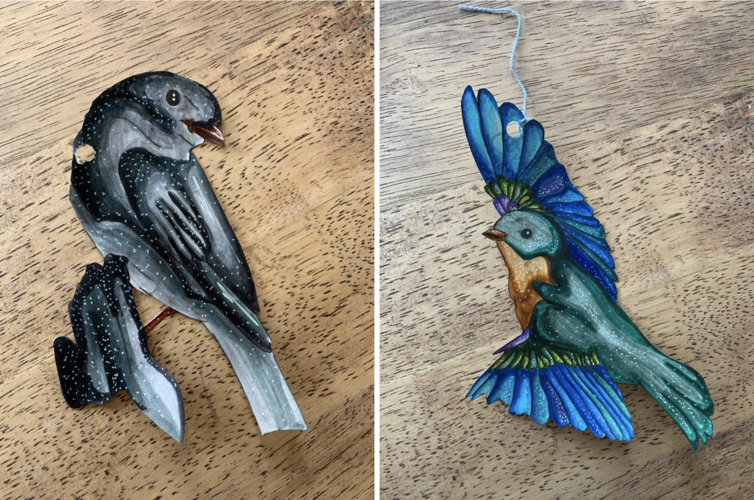
Materials
Paper, printed templates, scissors, colored pencils, crayons, markers, feathers, glitter, and washi tape
Optional: hole punch, string
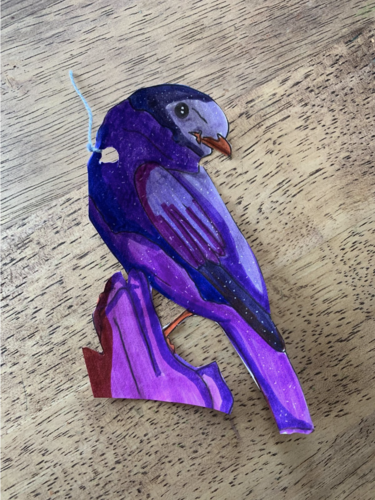
Learn & Explore
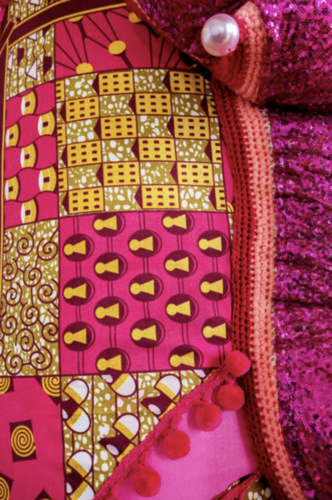
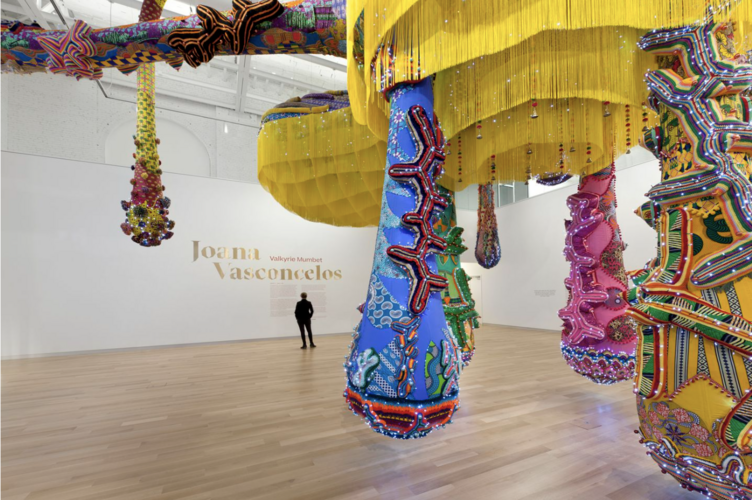
About Valkyrie Mumbet
When designing Valkyrie Mumbet, artist Joana Vasconcelos asked MAAM for a list of notable women from Massachusetts history. She was given a list of individuals whose legacies include suffrage, poetry, charity, cycling, nursing, and activism.
Vasconcelos focused on a local woman, Elizabeth Mumbet Freeman, who was born into slavery and became the first African American woman to successfully file a lawsuit for freedom and win in the state of Massachusetts. This case marked the beginning of a group of “freedom suits” that would ultimately lead the Massachusetts Supreme Judicial Court to outlaw slavery in the state.
Through Valkyrie Mumbet, Vasconcelos sought to make a connection across space, time, and cultures by honoring a woman who changed history and to inspire people to learn about other change-makers. In this project we strive to replicate Vasconcelos’ process by highlighting another group of women in history – the Suffragettes.
The title of “Valkyrie,” meaning warrior goddess, pays homage to inspiring women throughout her series. By creating our own freedom bluebirds, we will highlight the stories of the Suffragettes who were instrumental in fighting for freedoms such as the right to vote and continue to honor Freeman’s legacy.
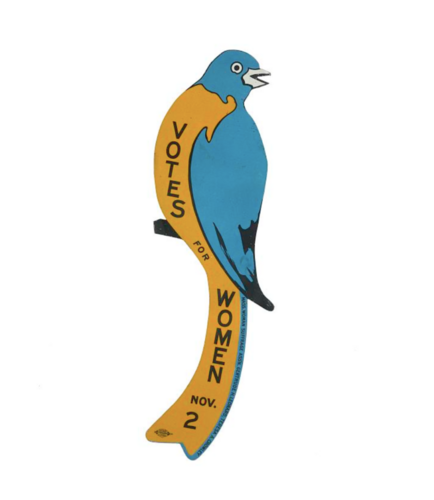
Who were the Suffragettes? Why Bluebirds?
The Suffragettes were a group of women in the United States who fought for women to have the right to vote. In 1915 they encouraged voters to support a law that would give women that right. This law would be passed by a referendum, which is a law directly voted on by the people rather than passed by elected representatives. The Suffragettes chose the bluebird to represent their cause and asked people to show support for their cause by hanging tin bluebirds all around Massachusetts. While the Suffragettes were unsuccessful in securing the right to vote in 1915, the bluebird symbol went down in history as a symbol of their cause.
Boston was home to many of these influential women, here are just a few….

A renowned orator and religious figure for the A.M.E. Zion Church, Eliza Ann Gardner advocated for expanding the rights of women and African Americans through her work in the anti-slavery, women's rights, and civil rights movements.

A revolutionary social activist, Alice Stone Blackwell played a significant role in the women's suffrage movement. Blackwell served as a leader in the Boston and Massachusetts movements and she raised her voice nationally through her work as editor of The Woman's Journal. She also participated in other 20th century social justice issues that defended the civil rights and liberties of others.
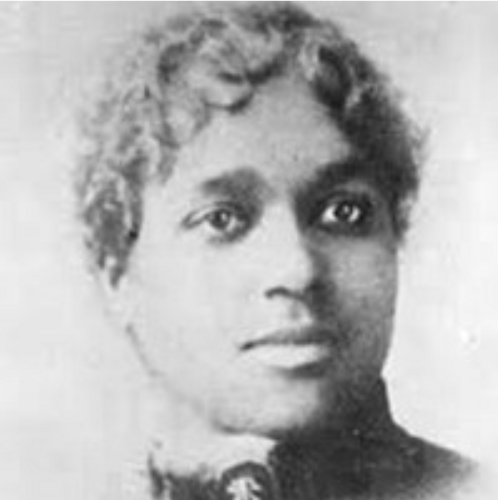
Educator and activist Maria Louise Baldwin belonged to a generation of Bostonian Black women involved in 19th and early 20th century activism. Her professional career and her life in activism set goals that are still being fought for today: social justice, equity, and representation for Black Americans.
Consider
- Can you think of other inspiring women who made a change in our world?
- Have you ever known someone who fought for what they believed in like the Suffragettes did?
- In Valkyrie Mumbet, Joana Vasconcelos pays homage to the story of Elizabeth Mumbet Freeman. If you were to make an artwork about someone who inspired you, who would you choose and why?
Create
Now it is your turn! Personalize your own freedom bluebird with any colors, decorations, and embellishments that you choose. Consider one or all of the following prompts while you work. When you are done creating your bluebird, write down some of your responses on the back!
Question
- The bluebird was a symbol of freedom for the Suffragettes. What animal, person, activity, color, or object is a symbol of freedom to you and why?
- What does your freedom allow you to do? What things might you be unable to do without your constitutional freedoms?
- What freedoms do you have that others might not?

Instructions
- Pick one of the provided bluebird templates and print it out, or draw your own.
- Color, collage, and/or paint your bird with any supplies you have on hand: markers, colored pencils, crayons, ribbons, feathers, etc.

- Once you have personalized your bird, cut it out using scissors. Make sure to ask someone for help with the scissors if you can not cut your bird out all on your own.
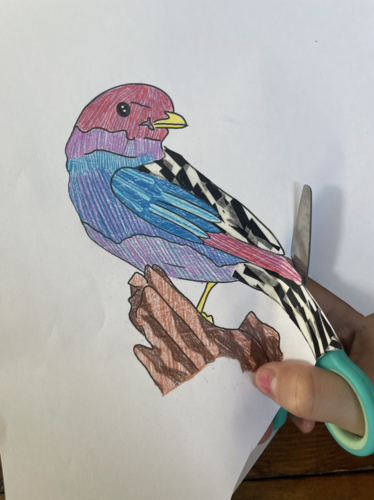
- Answer one of the questions above on the back of your work.
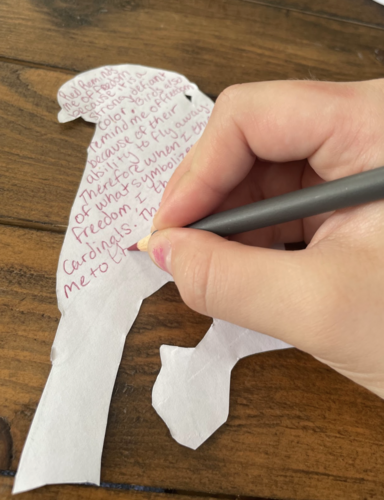
- Use a hole punch or scissors to make a small hole somewhere on your bird.
- Use this hole to tie a string to your bird. You can leave it as a single string to tie to something later or you can create a loop so you can hang your bird. You can also use many different supplies in place of string! Try ribbon, twine, wire, a strip of fabric or even an old shoelace.

- Finally, pick a spot to hang your bird. We encourage you to hang it in an area where it will be free to move with the wind. Put it in a place where you can see it often to remind you of your freedoms.
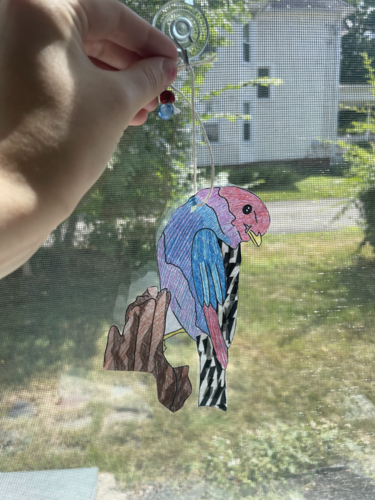
About the Creators of this Project
As a teaching museum, MAAM is educating and inspiring the next generation of artists at MassArt through exhibitions, programs, and engagement with our communities. This project was developed by MassArt Student Educators Emily Williams '25 (Editor), Jessie Jenkinson '23, Mekhi Mendoza '24, and Sahana Ananda '24 in collaboration with MAAM.